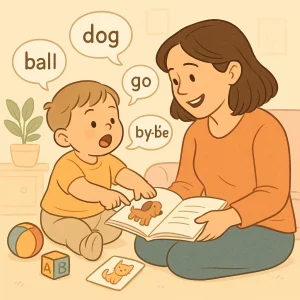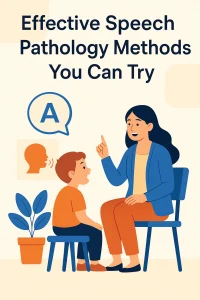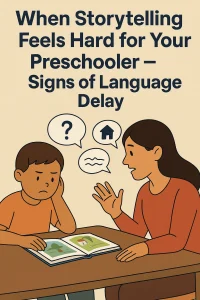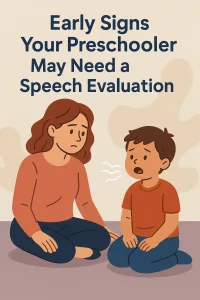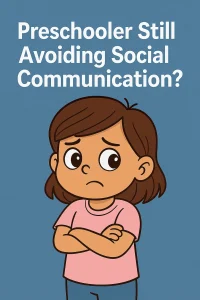Dyspraxia Explained: Impact & Strategies for Motor Skills
By Prapoorna M
Last Updated: December 28, 2023
Dyspraxia, also known as Developmental Coordination Disorder (DCD), is a neurological condition that affects the planning, coordination, and execution of voluntary movements. It is a lifelong condition that can impact various aspects of daily life, particularly fine and gross motor skills.
In-Depth Definition of Dyspraxia:
- Motor Planning Difficulties: Dyspraxia is characterized by difficulties in planning and coordinating movements. Individuals with dyspraxia may struggle with activities that require precision, coordination, and timing.
- Fine Motor Skills Impairment: Fine motor skills, involving tasks such as writing, tying shoelaces, or using utensils, can be significantly affected. Difficulties may manifest as poor hand-eye coordination, trouble with grip and manipulation of objects, and challenges in tasks requiring finger dexterity.
- Gross Motor Skills Challenges: Dyspraxia also impacts gross motor skills, affecting activities like running, jumping, and balancing. Individuals may appear clumsy, have difficulty with spatial awareness, and struggle with activities that involve both sides of the body.
Impact on Fine and Gross Motor Skills:
Fine Motor Skills:
- Writing and Drawing: Dyspraxia often leads to challenges in forming letters, maintaining proper grip on writing utensils, and producing legible handwriting.
- Buttoning and Zipping: Tasks that require intricate hand movements, like buttoning shirts or zipping zippers, may be particularly challenging.
- Hand-Eye Coordination: Difficulties in coordinating hand movements with visual input can affect various daily activities.
Gross Motor Skills:
- Balancing and Coordination: Dyspraxia can result in difficulties with balance and coordination, impacting activities such as riding a bike or playing sports.
- Spatial Awareness: Challenges in understanding and navigating space may lead to clumsiness and a higher risk of accidents.
- Complex Movements: Coordinating complex movements, such as catching or throwing a ball, can be challenging for individuals with dyspraxia.
Prevalence and Importance of Addressing Dyspraxia:
- Prevalence: Dyspraxia is estimated to affect around 5-6% of the population. It is more commonly diagnosed in males, and its prevalence may vary based on the criteria used for diagnosis.
Addressing dyspraxia is crucial for several reasons:
Academic Challenges:
Difficulties in fine motor skills can impact academic performance, particularly in tasks requiring writing and drawing.
Social and Emotional Impact:
Challenges in gross motor skills may affect a child’s participation in sports and recreational activities, potentially impacting social interactions and self-esteem.
Long-term Implications:
Early intervention and effective support are essential as difficulties with motor skills can persist into adulthood, influencing aspects of daily life, including employment and independent living.
Dyspraxia is a complex condition that significantly impacts fine and gross motor skills. Recognizing its prevalence and addressing it effectively through early intervention and tailored support is crucial for enhancing the quality of life and overall well-being of individuals with dyspraxia.
Different forms of Dyspraxia:
Dyspraxia manifests in various forms, and two prominent types are Motor Dyspraxia, which affects physical coordination, and Verbal Dyspraxia, which affects speech and oral coordination.
Motor Dyspraxia (Affecting Physical Coordination):
Motor dyspraxia, or developmental coordination disorder (DCD), primarily impacts physical coordination and motor skills. Individuals with motor dyspraxia may experience challenges in planning, organizing, and executing movements.
Impact on Daily Activities:
- Fine Motor Skills: Difficulties with tasks requiring precision, such as writing, drawing, and using utensils, are common. Buttoning shirts, tying shoelaces, and manipulating small objects may also be challenging.
- Gross Motor Skills: Activities involving coordination of larger muscle groups, like running, jumping, and playing sports, may be difficult. Individuals may appear clumsy and struggle with balance and spatial awareness.
Impact on Learning:
- Academic Challenges: Fine motor difficulties can affect academic performance, particularly in tasks involving handwriting and drawing.
- Participation in Physical Education: Challenges in gross motor skills may impact participation in physical education and sports activities.
Impact on Social Interactions:
- Recreational Activities: Difficulties in participating in physical play or sports activities may influence social interactions, limiting opportunities for engagement with peers.
- Self-Esteem: Challenges in physical coordination can affect self-esteem, especially in social contexts where physical activities are prevalent.
Verbal Dyspraxia (Affecting Speech):
Verbal dyspraxia, or childhood apraxia of speech, is a condition that affects the ability to coordinate and plan the movements needed for speech. It is a motor speech disorder.
Impact on Daily Activities:
- Speech Production: Individuals with verbal dyspraxia may struggle to plan and execute the precise movements needed for speech sounds. This can result in inconsistent speech production and difficulty forming clear and intelligible words.
- Oral Coordination: Challenges may extend to oral motor coordination, affecting tasks such as blowing, sucking, or swallowing.
Impact on Learning:
- Language Development: Verbal dyspraxia can impact language development, making it challenging for individuals to express themselves verbally.
- Reading and Writing: Speech difficulties may influence reading and writing skills, as these often rely on a solid foundation of phonological awareness.
Impact on Social Interactions:
- Communication Challenges: Difficulty in verbal communication may lead to frustration and challenges in effectively expressing thoughts and emotions.
- Peer Interactions: Children with verbal dyspraxia may face challenges in engaging with peers in conversation and play.
Overall Impact on Daily Life:
- Educational Impact: Both types of dyspraxia can have educational implications, affecting academic progress, participation, and engagement in various learning activities.
- Emotional Impact: Difficulties in daily activities and social interactions can impact emotional well-being, potentially leading to feelings of frustration, isolation, or low self-esteem.
- Multidimensional Challenges: The challenges presented by dyspraxia are multidimensional, influencing not only physical and verbal abilities but also the overall quality of life and well-being of individuals.
In conclusion, recognizing the different types of dyspraxia and understanding their impact on daily activities, learning, and social interactions is crucial for providing targeted support and interventions to individuals affected by these conditions. Early diagnosis and intervention can significantly enhance the coping mechanisms and overall functioning of individuals with dyspraxia.
How Dyspraxia looks in different age groups?
Dyspraxia, or Developmental Coordination Disorder (DCD), manifests with a range of signs and symptoms that can vary across different age groups. It’s important to note that the severity and presentation of these symptoms can vary widely from individual to individual.
Early Childhood (Ages 0-5):
Fine Motor Skills:
The children with Dyspraxia would have difficulty with grasping objects, using utensils and manipulating small items. They face challenges with coloring, drawing, and other fine motor tasks. Delay in achieving developmental milestones like tying shoelaces or buttoning clothes is observed.
Gross Motor Skills:
The children would face delays in crawling, walking, or running. They have clumsiness and frequent falls. They face challenges in participating in age-appropriate physical activities.
Speech and Language:
Delayed speech development or difficulty forming clear words is found in such children. They would face challenges in articulating sounds and coordinating oral movements. They have limited vocabulary and difficulty constructing sentences.
School-Age (Ages 6-12):
Fine Motor Skills:
Children with Dyspraxia have continued difficulties with handwriting, drawing, and using tools. They have challenges in organizing and managing personal belongings. They face struggles with tasks requiring precision, such as tying shoelaces or buttoning clothes.
Gross Motor Skills:
Such children have limited coordination in sports and physical activities. They find difficulty in activities that involve bilateral coordination, like catching or throwing a ball. They have challenges in maintaining balance and spatial awareness.
Academic Challenges:
These children also have poor handwriting and difficulty with written assignments. They face struggles in physical education activities and have challenges in organizing and completing tasks.
Adulthood (13 and older):
Fine Motor Skills:
Children with Dyspraxia face persistent challenges with activities requiring hand-eye coordination, such as typing or using tools. They find difficulty in doing tasks like cooking or using utensils. Challenges in professions requiring fine motor precision are also observed.
Gross Motor Skills:
These children have continued difficulties with coordination in sports or recreational activities. They face challenges in maintaining balance, particularly in unfamiliar environments. Their limited participation in physical activities explains the issue.
Occupational Challenges:
Such children also face difficulties in professions that require precise motor skills, such as assembly line work. They have challenges in driving, especially with complex motor tasks. Their issues have a potential impact on daily living activities, such as dressing or grooming.
Variability in Severity and Presentation:
Fine Motor Skills:
- Mild: Occasional difficulties with handwriting or fine motor tasks.
- Moderate: Consistent challenges impacting academic and daily tasks.
- Severe: Significant impairment affecting various aspects of daily life.
Gross Motor Skills:
- Mild: Occasional clumsiness with minimal impact on daily activities.
- Moderate: Noticeable challenges in sports and recreational activities.
- Severe: Significant limitations in physical coordination and spatial awareness.
Speech and Language:
- Mild: Slight delays or difficulties in certain sounds.
- Moderate: Pronounced speech difficulties impacting communication.
- Severe: Significant challenges in articulation and language expression.
Interdisciplinary Approach to Diagnosis:
- Pediatricians: Conduct initial assessments, rule out medical concerns, and oversee overall health.
- Neurologists: Assess neurological factors, rule out neurological disorders, and contribute to a comprehensive diagnosis.
- Therapists (Occupational, Physical, and Speech-Language): Provide detailed assessments of motor skills and communication abilities.
Intervention and Support Strategies:
Occupational Therapy:
- Focus on improving fine motor skills, hand-eye coordination, and daily living activities.
- Specific interventions may include activities to enhance handwriting and tool use.
Physical Therapy:
- Emphasis on improving gross motor skills, coordination, and balance.
- Activities may include exercises to enhance core strength and coordination.
Speech-Language Therapy:
- Targeting speech sound production, language comprehension, and expressive communication.
- Techniques may involve speech drills, communication games, and social skills training.
Effectiveness of Interventions:
- Occupational Therapy: Improvement in fine motor tasks and increased independence in daily living activities.
- Physical Therapy: Enhanced coordination, improved balance, and increased participation in physical activities.
- Speech-Language Therapy: Improved articulation, language expression, and enhanced social communication skills.
Holistic Approach:
- Combining therapies for a comprehensive and tailored intervention plan.
- Involvement of parents and caregivers in reinforcing strategies at home.
Understanding the signs and symptoms across different age groups and the variability in severity is crucial for early identification and targeted intervention. Tailored support can significantly enhance the individual’s ability to navigate daily life and achieve their full potential despite the challenges posed by dyspraxia. Living with dyspraxia involves navigating a range of challenges, but with a multidisciplinary diagnosis, personalized interventions, and support, individuals can develop coping strategies and lead fulfilling lives.
Frequently Asked Question
1. What is Dyspraxia?
Dyspraxia, or Developmental Coordination Disorder (DCD), is a neurological disorder affecting the planning, coordination, and execution of voluntary movements, often impacting fine and gross motor skills and sometimes speech.
2. What causes Dyspraxia?
The exact cause of dyspraxia is unknown, but it’s believed to involve genetic influences, premature birth, or abnormalities in brain development.
3. How is Dyspraxia diagnosed?
Diagnosis involves assessments by various professionals, including pediatricians, neurologists, and therapists, who evaluate motor skills, coordination, and speech abilities.
4. Can Dyspraxia be cured?
There is no cure for dyspraxia, but therapies and interventions can significantly help manage the symptoms and improve motor skills and coordination.
5. How does Dyspraxia affect daily life?
Dyspraxia can impact daily activities, academic performance, social interactions, and self-esteem, affecting tasks ranging from fine motor skills like writing to gross motor skills like balancing.
6. What are the treatment options for Dyspraxia?
Treatment often includes occupational therapy, physical therapy, and speech-language therapy, along with individualized education plans in academic settings.
7. How does Dyspraxia vary by age?
Symptoms and challenges of dyspraxia vary significantly with age, affecting basic motor skills and speech in younger children and leading to more complex coordination and social challenges in older children and adults.
8. Can adults have Dyspraxia?
Yes, dyspraxia is a lifelong condition, and adults may continue to face coordination and motor skill challenges affecting their work and daily activities.
9. How can I support someone with Dyspraxia?
Support involves understanding their challenges, providing encouragement, facilitating access to therapies, and ensuring a supportive environment at home, school, and work.
10. Does Dyspraxia affect intellectual abilities?
Dyspraxia does not affect intelligence but can impact performance in tasks requiring motor skills and coordination, which may be mistaken for cognitive difficulties.
About the Author:
Prapoorna Mangalampalli, Psychologist
Prapoorna, an author with dual master’s degrees in Psychology and English, excels in exploring and enhancing human experiences. Her writing, characterized by deep empathy and insight, primarily focuses on the complexities of counseling, spanning areas such as online, marital, relationship, child, family, and career counseling. Specialized training in various counseling sectors underscores her dedication to positive change. In her blogs, Prapoorna offers valuable guidance and a unique perspective for parents of children with Autism and special needs, creating a supportive community in this realm.
Book your Free Consultation Today
Parent/Caregiver Info:
Client’s Details:
* Error Message


